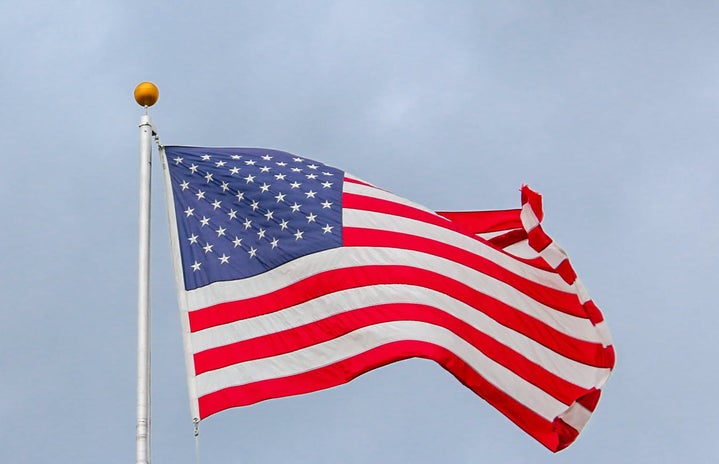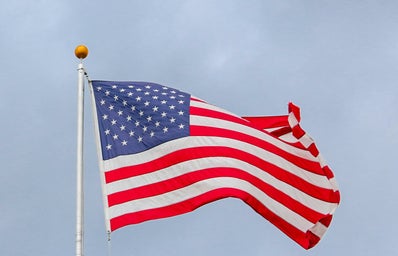The political views expressed in this article are the author’s own and do not reflect the views of Her Campus at Emmanuel.
Since the inauguration of President George Washington in 1789, Lady Washington became the first First Lady of the United States and thus was born the image and influence of this government position. Though as a nation we have made great strides to encourage and practice a progressive attitude, issues of misogyny and sexism still pollute our country, especially with our current President.
Over the past 230 years, media following the first ladies has remained consistent with excessive and over-emphasized coverage on their appearance rather than their character and accomplishments.
In 2013, C-Span Network, conducted a series of episodes researching, studying, producing and commenting on media coverage of first ladies. On September 7, John Maynard, Newseum Exhibit Programming Director, begins the live commentary with the question: “Why is it important to learn about the first ladies?” This nation’s education system thus far, integrates learning about the history of our presidents but not our first ladies.
Cokie Roberts, ABC News Political Commentator and NPR Contributor, responded, “They have a tremendous amount of influence and power and have from the beginning” said Roberts.
Roberts further explains that there is this myth that first ladies possibly started being powerful with Eleanor Roosevelt then went back in the closet and then popped back up with Hillary Clinton. And that is simply not true. First ladies have always been powerful. Eleanor Roosevelt and Hillary Clinton are incredible examples sure, but they are not the only ones.
The first ladies of our American history are equally as important if not more important to not only teach the children of the next generation but teach media consumers. The issue is not only limited to the amount of coverage the first ladies receive but the type of coverage.
Does she look the part?
Jackie Kennedy
A first lady is first and foremost criticized for her appearance. Jacqueline Kennedy Onassis is most famously known for her looks as a fashion icon when she not only had her own career and numerous accomplishments, but she had a significant influence on what it meant to be a first lady.
Onassis worked for the Washington-Times Herald as a reporter and a photographer. She covered topics such ranging from personal finance to politics and relationships.
She spoke several languages including French, Spanish, Italian and English; in fact, Onassis translated French books on Southeast Asia for her husband and helped Kennedy win over campaign audiences by speaking their native tongue— French to voters in Louisiana and Spanish to voters in Texas. She was also a very successful book editor.
She helped start the conversation about the media’s obsession with a woman’s appearance. “All the talk over what I wear and how I fix my hair has amused and puzzled me. What does my hair have to do with my husband’s ability to be president?” said Onassis in 1960.
Onassis made a statement and raised the question of why a woman’s appearance matters so much— that her looks have nothing to do with her husband’s ability to be president nor do they have anything to do with her ability to be the first lady. That she is not just a pretty face to be objectified. She initiated the important conversation, that is still ongoing today, to take place not only so that first ladies can be treated fairly but that women in general can too.
Additionally, President Kennedy’s success was largely attributed to his wife and her influential role as the first lady. Her fluency in multiple languages and her political literacy helped Kennedy not only win on the campaign trail but with international affairs and foreign visits.
As Vinciane Ngomsi, writer for Insider, said in 8 ways Jackie Kennedy influenced history, “Jackie took her title seriously and became one of the most iconic first ladies of all time simply for how much she changed what it meant to be a first lady.”
Hillary Clinton
According to the PBS feature, Frontline: The Choice 2016, in 1979 during Hillary Rodham Clinton’s time as the first lady to her husband, Bill Clinton who was the governor of Arkansas at the time, she was harshly criticized for not “looking the part”. Her flowered pants, her big glasses and her crazy hair didn’t fit Arkansas’s image of what a first lady should look like. Rodham’s appearance and approach was considered “unconventional”— she was educated, she dressed differently, she kept her maiden name and she had her own career as a corporate lawyer.
Rodham didn’t want to represent the example of a woman being merely an accessory to her husband. She believed that she was more than a housewife and a pretty face— she believed that women are more than that.
As Jim Blair, friend of Rodham’s, explained, “That’s typically what a political wife is, is an accessory to her husband and it didn’t fit well” said Blair.
When asked if she was concerned that she does not fit the image for what a governor’s wife should be, Rodham responds, “No, because each person should be assessed and judged on that person’s own merits,” said Rodham.
Because she didn’t fit the ideal image that Arkansans pr-selected for the first lady to the governor, media coverage often tried to paint her as the bad guy. Some say that is consequently why Bill was not re-elected as governor.
In efforts to help continue an upwards trajectory for her husband’s political career, and everything she wanted to achieve in politics with him, Rodham made significant changes to her appearance—she took her husband’s last name, she lost weight, she dyed her hair, she got rid of her big glasses, she started dressing more modestly and put makeup on.
“When she had to begin to change her appearance, dye her hair, lose a lot of weight, lose her glasses, not speak up, not be as much as who she was, that hurt all of us. We all felt bad about that” said fellow Wellesley Classmate, Nancy Wanderer.
According to PBS, it was hard on her loved ones and it was hard on her. In order to move forward in the political world and to receive more positive media feedback, Rodham had to essentially forfeit her identity and change her physical appearance.
Michelle Obama
In 2009, when President Obama was elected into office, first lady, Michelle Obama caused uproar in the media because of her outfit choice for her first official photo as the first lady. During Barack’s first congressional address, Michelle chose a sleeveless purple dress. The media responded claiming that it was too “informal”.
According to Wendy Donahue, Chicago Tribune style reporter, Michelle has faced this kind of criticism before, “…people have said maybe [her clothing is] distracting from the central point, from what is going on,” said Donahue. Michelle’s sleeveless-type fashion was “distracting” because in the media’s perspective, she was not fulfilling the appearance a first lady should have— modest.
This idealism around a woman needing to look “modest” comes from a deep rooted issue in sexism that pollutes the political environment today. But Michelle’s threat is deeper than the physical dress she wears to her husband’s congressional addresses. Her outfit poses a threat because it represents her confidence, independence and self-advocacy. She remains true to her style just like she remains true to her power and her voice.
Malika Henderson, Politico White House reporter, explains that a first ladies fashion is a reflection of herself, “She very much is her own person,” said Henderson.
Her kind of philosophy of fashion is that women should wear what they are comfortable in. A modest appearance and style represents a first lady who doesn’t speak up. A woman who isn’t strong-willed, confident and capable. Michelle Obama, like many other strong and confident first ladies, is not representative of a modest style hence why she has been consistently criticized.
Home & Garden
The mass media additionally, often affiliates coverage of the first lady with housewife type accomplishments which therefore further emphasizes and promotes women in the stereotypical sexist role of a housewife. Media coverage of Onassis as a first lady, even today, focuses on her accomplishments of the Rose Garden and her interior decoration of the White House. According to Insider, one of the ways that Onassis influenced history was her interior decorating accomplishments that inspired first ladies of the following years. While these are still nice accomplishments that we can admire about Onassis, they are not ones to primarily focus on.
The media’s focus on Onassis’s reputation around these types of accomplishments in addition to her physical appearance, take away from her career goals and her many other accomplishments that represent her as a strong and powerful woman. This type of media focus portrays Onassis, the first lady, as a woman not in a position of power but in a position ideally representative of women in general—a housewife.
In December of 2019, The Daily Beast reported that Mrs. Trump’s decorations were “joyless”. The media focus on Melania’s lack of ability to create a “warm and welcoming” home for the holidays reflects the idea that it is a first lady’s job to create a happy household.
The lack of proper “Christmas spirit” in this instance, does not achieve that goal and therefore Melania is painted as a failure. Furthermore, the media focus on Melania’s failure encourages the sexist idealism that a woman’s job is to create a happy home.
The Male Gaze Theory
Melania Trump is a prime example of the mass media exploiting current President Trump’s behavior to re-emphasize sexist idealism— “the male gaze”. According to Lauren Mulvey, The Male Gaze Theory is essentially where women in the media are viewed by the heterosexual man as objects of their desire. First ladies have been and continue to be portrayed in the mass media as women of a heterosexual man’s desire.
On August 28, 2019, during his visit to Dayton, Ohio Trump called his first lady to his side by patting his leg— beckoning her like a dog. James Felton, comedy writer and author, responded to this event through his own representation of media coverage.
“Donald Trump: ‘Nobody respects women more than me’ Also Donald Trump:
‘Here girl, come here girl’ [pats leg] ‘come here wife, there’s a good girl’” tweeted Felton.
According to Newsweek, less than a day later, Felton had 240,000 retweets and 1,100 likes; in fact, one twitter user commented with a Trump quote referring to women from 1992, “You have to treat’ em like s***” Trump told reporters. Other twitter users also tweeted away their responses.
After Felton’s response, a parody account for the British Prime Minister, Boris Johnson, shared the clip of Trump calling Melania like a dog and offered a very similar take on the event.
“If you were a misogynistic, arrogant old s***, how would you ask your wife to join you?” Johnson tweeted. “1. Call her name 2. Wave to catch her attention 3. Pat your leg as if she were a dog.”
However, Twitter responding and highlighting Trump’s disgusting behavior towards the First Lady is very positive. Because these users, with big Twitter followings, are demonstrating that this behavior is wrong— that a woman is not merely the object of a heterosexual man’s desire that can be controlled and manipulated. That she is independent, strong and deserving of respect. This kind of coverage paints Trump, rightfully so, as the bad guy and that his behavior emphasizes idealism that should be outdated at this point.
In September of 2016, President Trump told ABC reporter David Muir in an interview broadcast that he didn’t think Rodham “looked the part” to be president.
“Well, I just don’t think she has a presidential look, and you need a presidential look” said Trump.
With a long history of provocative and sexist comments against women, Trump’s comments about Rodham not having the “presidential look” in addition to other comments he has made about her “stamina” prove that to misogynists like Trump, women are nothing more than sex objects. And media channels that follow and cover men like Trump in a positive way, only further emphasize the idealistic sexist notion that women are objects of a heterosexual man’s desire and therefore cannot be taken seriously in a position of power. The first lady to the president of the United States is a position of power.
More accurate educational coverage on the first ladies of the United States incorporated into the media and school curriculums would go a long way to breaking down sexist idealism and representing not only the true influence and impact of our first ladies but of a woman’s role in a position of political power.
With a man like Donald Trump in the white house, the time could not be more urgent to do so.



